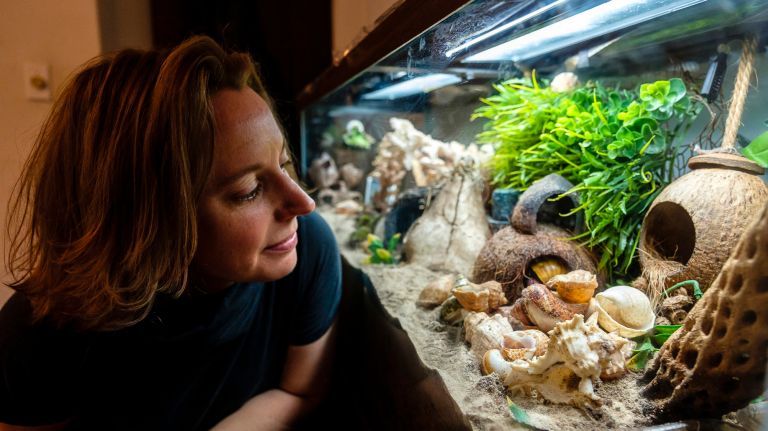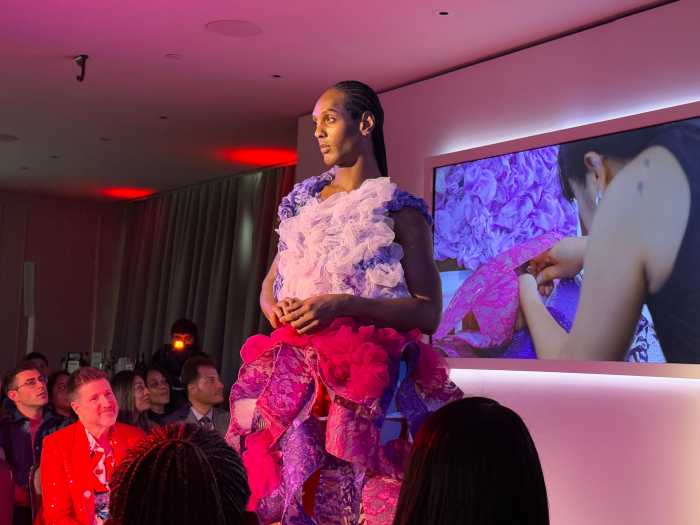
Tucked away in an Astoria apartment is a haven for hermit crabs. There’s warm, deep sand, fresh food and lots of shells to choose from.
“I had no idea there were so many hermit crabs in New York City that don’t have a home,” said Sarah Porter, standing next to her massive tank that houses 16 of the crustaceans. “People take them home and then realize hermit crabs need so much to be healthy and then they try to get rid of them,”
Saving hermit crabs is now a passion for Porter, 36, director of business development and strategic partnerships for the nonprofit Hope for Haiti.
In recent months, Porter has started videotaping the antics of her crabby crew and created a YouTube channel called “Two Claws Up,” to help educate the public about the mysterious critters.

The short, engaging videos, with titles such as “A Very Crabby Day” and “Crabs Like Food,” show the hermits — who have names like Pajamas, Hermie, Itchy and Scratchy — as they navigate their habitat, munch on fresh fruits and veggies and check out some new shells.
Her work as a hermit rescuer started with a random find on Craigslist about five years ago. While scrolling through the listings, Porter noticed a post from a woman trying to give away five hermit crabs. She took them in, and then found even more pleas from people who didn’t know what to do with the small, shy creatures they had picked up as souvenirs at the Jersey shore or received as a gift from an office party where they were used to race for entertainment.
In order to thrive, the critters — which hail from the tropics — need high humidity, warm temperatures and lots of sand.
Instead, they are often kept in small wire cages where they spend most of their time curled up in their shells.
“Unfortunately, they are basically marketed as toys, but they are a living thing and they can feel things,” said Porter. “They need a very specific environment to be able to breathe.”
Porter delved into research, finding out as much as she could about hermit crabs and what they need to be happy and healthy. She and her boyfriend found an empty 55-gallon tank that had been left with the trash on a nearby street and lugged it back to the apartment they share. They filled it with layers of sand, hanging coconuts, a mountain of new shells and both fresh and saltwater pools. A heat lamp keeps the temperature toasty as Porter monitors the humidity.
“The crabs are slowly suffocating if they don’t have an environment like this,” she said.
They also need new shells as they grow. Hermit crabs burrow deep into the sand when it’s time to molt, sometimes disappearing for months at a time. They shed their exoskeleton, grow a new one and eventually reappear.
Porter tells the story of one owner who handed over her crab after not seeing it move for days. Fearing the worst, Porter placed the crab in her heated tank.
“Within 10 seconds, it came out of its shell and started eating,” she said. “Then it switched shells …we’ve had Scraps for four years now.”
Watching the crabs “shop” for new shells is fascinating, she said.
“It’s really interesting to see the process,” Porter said. “They will pick one, look inside it, turn it … it’s like they are taking measurements.”



































